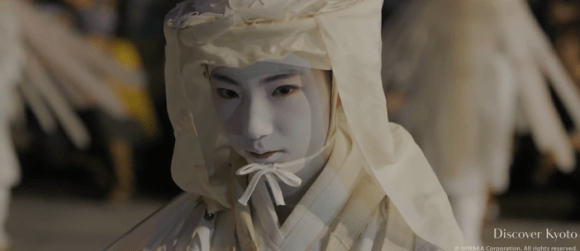
Many neighborhoods in Japan have festivals during the summer, often centered around the local shrine. They generally include processions, musical performances, and Shinto rituals, with the festivities lasting a day, or maybe two if they stretch throughout the weekend.
Kyoto’s Gion district, though, does things on a grander scale. The Gion Matsuri (Gion Festival) starts on July 1 and runs for the entire month, with some sort of event happening almost every day. And while most non-residents can’t clear out enough of their schedule to sped a few solid weeks in Japan’s former capital, this beautiful video gives the highlights of the event.
Although it’s a lively and enjoyable event now, the roots of the festival lie in some tragic events. Much like Tokyo’s gigantic Sumidagawa Fireworks Festival, the Gion Matsuri was started as an effort to appease angry gods. In the year 869, Kyoto had been struck with a plague, and so the Yasaka Shrine’s mikoshi (portable shrines) were paraded around the city in hopes that the placated gods would bestow their blessings upon Kyoto once again.
The same response was made during subsequent plagues, and in 970, the festival became a regular affair, gradually taking on the joyous atmosphere it has today.
One of the most important days of the festival comes on July 10, with the event known as Omukae Chochin. Since the miikoshi are the temporary homes of the gods, it wouldn’t due to have them sullied by earthly impurities during their processions. To purify their paths, men carry bundles of flaming bamboo on their backs, as fire is held to have a spiritually cleansing effect in Shinto belief.
Before the mikoshi arrive at the shrine, a number of dances are performed on the grounds the most impressive of which is the Sagi Odori, which means “Heron Dance.” A similar performance is held in Shimane Prefecture’s Tsuwano, in which dancers dress and move like the long-legged birds.
Other dances include the Komachi Odori, which originated in the early 17th century as part of a welcome given by Kyoto to visiting Shogun Tokugawa Ieyasu, the last warlord standing after generations of civil war.
▼ If people not only dance when you come to town, but still do it 400 years later, then you’ve got some serious juice.
Once the dancing is done, the three mikoshi themselves make their entrance preceded by a procession of lanterns.
Two weeks later, the Gion Matsuri has another big day with the Hanagasa Parade on the 24th. Hanagasa literally means “Flower Umbrella,” and those are exactly the things used to decorate the floats.
Mikoshi once again feature prominently, this time in small-sized versions carried by children. Kids actually play a large role in the parade, as other appear dressed as samurai or horseback-riding pageboys.
With its long history as a center of geisha culture, representatives from the city’s various geisha districts also appear, both atop floats pulled by attendants and onstage during a series of musical performances.
Also held on July 24 is the Kankosai. While the Mikoshi are publicly displayed during the Gion Matsuri, they spend the rest of the year in storage. So before they make their return to Yasaka Shrine, they need to be purified, which is the reason for the Kankosai.
Finally, on July 31, the last day of the festival, Eki Shrine is the site of the Nagoshisai. A sort of closing ceremony, the Nagoshisai is yet another purification ritual, but this time for human mortals, who’re blessed as they pass through a grass ring known as a chinowa.
After that, the festival comes to a close. We assume everyone heads home for some well-deserved rest and starts gathering their strength for the next Gion Matsuri, which is then just 11 months away.

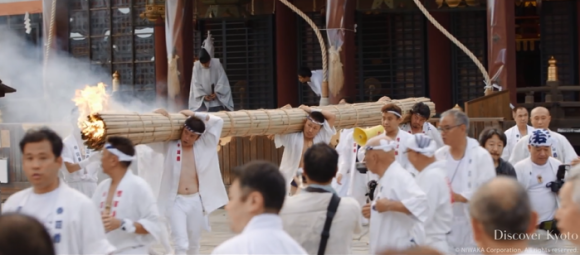
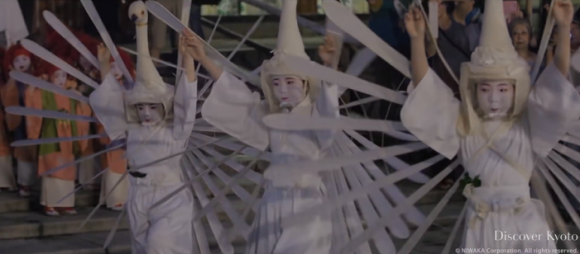
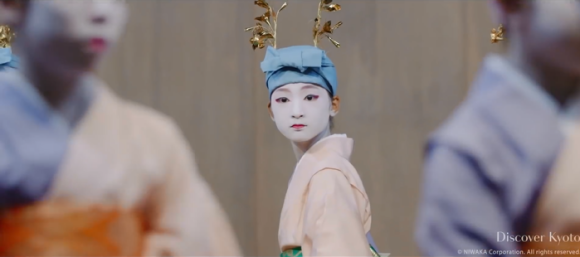
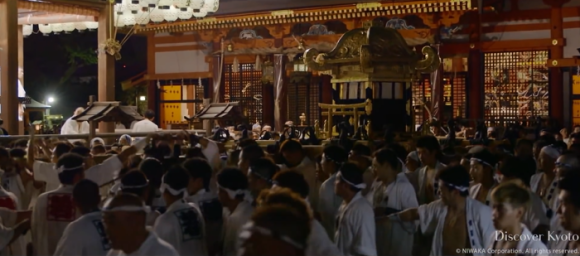
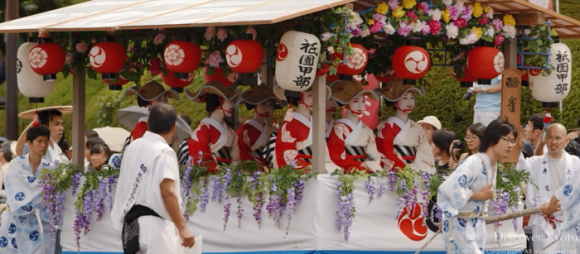
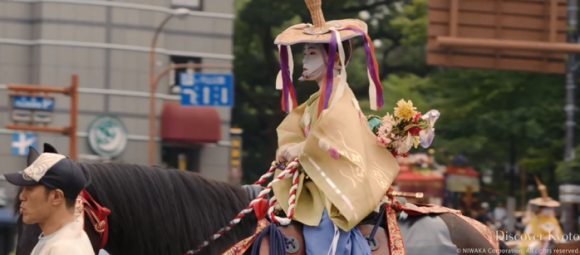

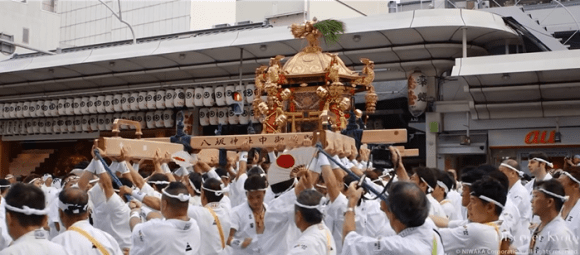
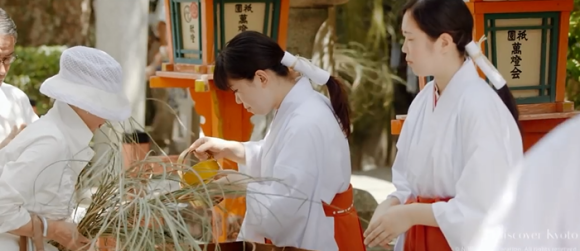
 A first-time visit to Kyoto’s Gion Festival becomes a night to remember
A first-time visit to Kyoto’s Gion Festival becomes a night to remember The most crowded place in Tokyo? Might be the Kanda Matsuri festival, but it’s still awesome
The most crowded place in Tokyo? Might be the Kanda Matsuri festival, but it’s still awesome Kyoto’s famous Gion Festival celebrates its 1150th anniversary with…crowdfunding?
Kyoto’s famous Gion Festival celebrates its 1150th anniversary with…crowdfunding? The top 11 Japanese summer festivals, according to travellers
The top 11 Japanese summer festivals, according to travellers Despite raging typhoon, Gion Matsuri goes on as it has for over 1,000 years【Video】
Despite raging typhoon, Gion Matsuri goes on as it has for over 1,000 years【Video】 Japanese beef bowl chain Sukiya’s 2026 Smile Box lucky bag basically pays for itself
Japanese beef bowl chain Sukiya’s 2026 Smile Box lucky bag basically pays for itself Majority of Japanese mayors say foreign residents are essential but most see good and bad effects
Majority of Japanese mayors say foreign residents are essential but most see good and bad effects The beautiful models and awesome booths of Tokyo Game Show 2018【Photos】
The beautiful models and awesome booths of Tokyo Game Show 2018【Photos】 Here’s what to expect if it’s your first time seeing kabuki at Tokyo’s Kabuki-za Theater
Here’s what to expect if it’s your first time seeing kabuki at Tokyo’s Kabuki-za Theater History’s worst job? Japanese noblewomen used to hire servants to take the blame for their farts
History’s worst job? Japanese noblewomen used to hire servants to take the blame for their farts Pizza Hut Japan’s hot lucky bags are perfect for a New Year’s pizza party
Pizza Hut Japan’s hot lucky bags are perfect for a New Year’s pizza party New limited Starbucks Japan drinks mix tranquil peach and majestic chai
New limited Starbucks Japan drinks mix tranquil peach and majestic chai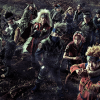 Cast of this summer’s live-action Naruto stage play looks more awesome than ever in new photos
Cast of this summer’s live-action Naruto stage play looks more awesome than ever in new photos Four Shinto shrines to pray for love at in Japan to start the New Year
Four Shinto shrines to pray for love at in Japan to start the New Year Studio Ghibli director Hayao Miyazaki’s films now available in DVD and Blu-ray sets with extras
Studio Ghibli director Hayao Miyazaki’s films now available in DVD and Blu-ray sets with extras Starbucks Japan ready to get Year of the Horse started with adorable drinkware and plushies【Pics】
Starbucks Japan ready to get Year of the Horse started with adorable drinkware and plushies【Pics】 Hayao Miyazaki says Happy New Year to Studio Ghibli fans with new art for Year of the Horse
Hayao Miyazaki says Happy New Year to Studio Ghibli fans with new art for Year of the Horse 7 great places to see Mt. Fuji from without having to climb it
7 great places to see Mt. Fuji from without having to climb it We found possibly the quietest Japanese-style hotel in Tokyo’s bustling Shinjuku district
We found possibly the quietest Japanese-style hotel in Tokyo’s bustling Shinjuku district Cup Noodle tries an authentic Jiro-style ramen, but something’s not quite right
Cup Noodle tries an authentic Jiro-style ramen, but something’s not quite right Hello Kitty Choco Egg figures are an adorable trip through three periods of Japanese pop culture【Pics】
Hello Kitty Choco Egg figures are an adorable trip through three periods of Japanese pop culture【Pics】 Japan’s oldest largetooth sawfish in captivity back on display in Mie Prefecture
Japan’s oldest largetooth sawfish in captivity back on display in Mie Prefecture Cyberpunk anime meets traditional culture in Ghost in the Shell gold leaf Japanese changing screens
Cyberpunk anime meets traditional culture in Ghost in the Shell gold leaf Japanese changing screens The best Starbucks Japan Frappuccinos we want to drink again in 2026
The best Starbucks Japan Frappuccinos we want to drink again in 2026 We revisited Sweets Paradise after a decade to see if Japan’s dessert buffet still delivers
We revisited Sweets Paradise after a decade to see if Japan’s dessert buffet still delivers 7-Eleven Japan starts new temporary luggage storage service in over 300 branches
7-Eleven Japan starts new temporary luggage storage service in over 300 branches Disillusionment at Tsukiji’s tourist-target prices led us to a great ramen restaurant in Tokyo
Disillusionment at Tsukiji’s tourist-target prices led us to a great ramen restaurant in Tokyo Starbucks teams up with 166-year-old Kyoto doll maker for Year of the Horse decorations【Photos】
Starbucks teams up with 166-year-old Kyoto doll maker for Year of the Horse decorations【Photos】 Tokyo considering law requiring more trash cans following litter increase in heavily touristed area
Tokyo considering law requiring more trash cans following litter increase in heavily touristed area Tokyo’s Tsukiji sushi neighborhood asks tour groups to stay away for the rest of the month
Tokyo’s Tsukiji sushi neighborhood asks tour groups to stay away for the rest of the month Tokyo event lets you travel back in time, for free, to celebrate 100 years since Showa era start
Tokyo event lets you travel back in time, for free, to celebrate 100 years since Showa era start Sanrio theme park in Japan announces plans to expand into a Sanrio resort
Sanrio theme park in Japan announces plans to expand into a Sanrio resort Japan may add Japanese language proficiency, lifestyle classes to permanent foreign resident requirements
Japan may add Japanese language proficiency, lifestyle classes to permanent foreign resident requirements Stamina-destroying “Paralysis Noodles” are Tokyo’s newest over-the-top ramen innovation
Stamina-destroying “Paralysis Noodles” are Tokyo’s newest over-the-top ramen innovation Survey asks foreign tourists what bothered them in Japan, more than half gave same answer
Survey asks foreign tourists what bothered them in Japan, more than half gave same answer Japan’s human washing machines will go on sale to general public, demos to be held in Tokyo
Japan’s human washing machines will go on sale to general public, demos to be held in Tokyo Japan’s deadliest food claims more victims, but why do people keep eating it for New Year’s?
Japan’s deadliest food claims more victims, but why do people keep eating it for New Year’s? We deeply regret going into this tunnel on our walk in the mountains of Japan
We deeply regret going into this tunnel on our walk in the mountains of Japan Studio Ghibli releases Kodama forest spirits from Princess Mononoke to light up your home
Studio Ghibli releases Kodama forest spirits from Princess Mononoke to light up your home Major Japanese hotel chain says reservations via overseas booking sites may not be valid
Major Japanese hotel chain says reservations via overseas booking sites may not be valid Put sesame oil in your coffee? Japanese maker says it’s the best way to start your day【Taste test】
Put sesame oil in your coffee? Japanese maker says it’s the best way to start your day【Taste test】 No more using real katana for tourism activities, Japan’s National Police Agency says
No more using real katana for tourism activities, Japan’s National Police Agency says Starbucks Japan reveals new sakura drinkware collection, inspired by evening cherry blossoms
Starbucks Japan reveals new sakura drinkware collection, inspired by evening cherry blossoms Updated cherry blossom forecast shows extra-long sakura season for Japan this year
Updated cherry blossom forecast shows extra-long sakura season for Japan this year Japanese Penis Festival shrine distances itself from penis mascot
Japanese Penis Festival shrine distances itself from penis mascot Tohoku Rokkonsai to showcase northern Japan’s six biggest summer festivals all in one place
Tohoku Rokkonsai to showcase northern Japan’s six biggest summer festivals all in one place 1,300-year-old Kyoto shrine changes bell policy following altercation with foreign tourists【Video】
1,300-year-old Kyoto shrine changes bell policy following altercation with foreign tourists【Video】 Akihabara shrine celebrates anime festival Noryo Matsuri on an Animal Crossing Dream Island
Akihabara shrine celebrates anime festival Noryo Matsuri on an Animal Crossing Dream Island Kunchi: The major Japanese festival most Japanese people don’t know about
Kunchi: The major Japanese festival most Japanese people don’t know about Kyoto hotel OMO5 Kyoto Gion offers Yojiya cosmetics Pretty Girl Room Stay for New Year’s season
Kyoto hotel OMO5 Kyoto Gion offers Yojiya cosmetics Pretty Girl Room Stay for New Year’s season Kyoto’s uniquely beautiful New Year’s tradition is being carried on by Starbucks Japan【Photos】
Kyoto’s uniquely beautiful New Year’s tradition is being carried on by Starbucks Japan【Photos】 Our street food-skipping reporter learns he’s been doing Japanese festivals wrong his whole life
Our street food-skipping reporter learns he’s been doing Japanese festivals wrong his whole life Have a refreshing summer night’s stay in Kyoto with the Yojiya Pretty Girl Room Stay in Gion
Have a refreshing summer night’s stay in Kyoto with the Yojiya Pretty Girl Room Stay in Gion Kyoto’s primeval forest to come to life in beautiful interactive light art display 【Video】
Kyoto’s primeval forest to come to life in beautiful interactive light art display 【Video】 Step into a magical spirit world at the Motomiya Festival at Fushimi Inari Shrine in Kyoto
Step into a magical spirit world at the Motomiya Festival at Fushimi Inari Shrine in Kyoto Three reasons you should go to Kyoto right now
Three reasons you should go to Kyoto right now No-bus Kyoto sightseeing! SoraNews24’s ultimate on-foot guide for Japan’s former capital【Part 3】
No-bus Kyoto sightseeing! SoraNews24’s ultimate on-foot guide for Japan’s former capital【Part 3】
Leave a Reply